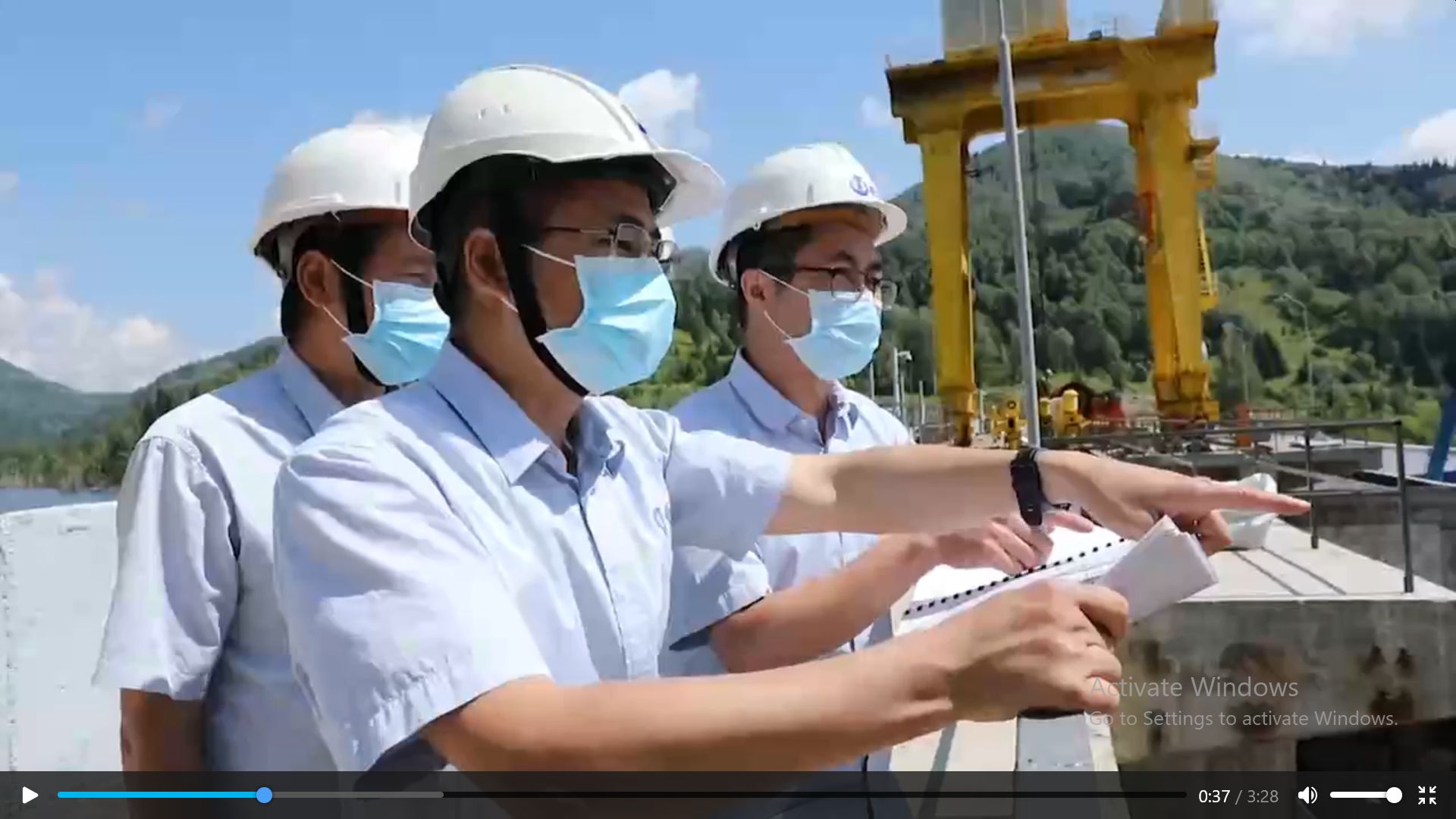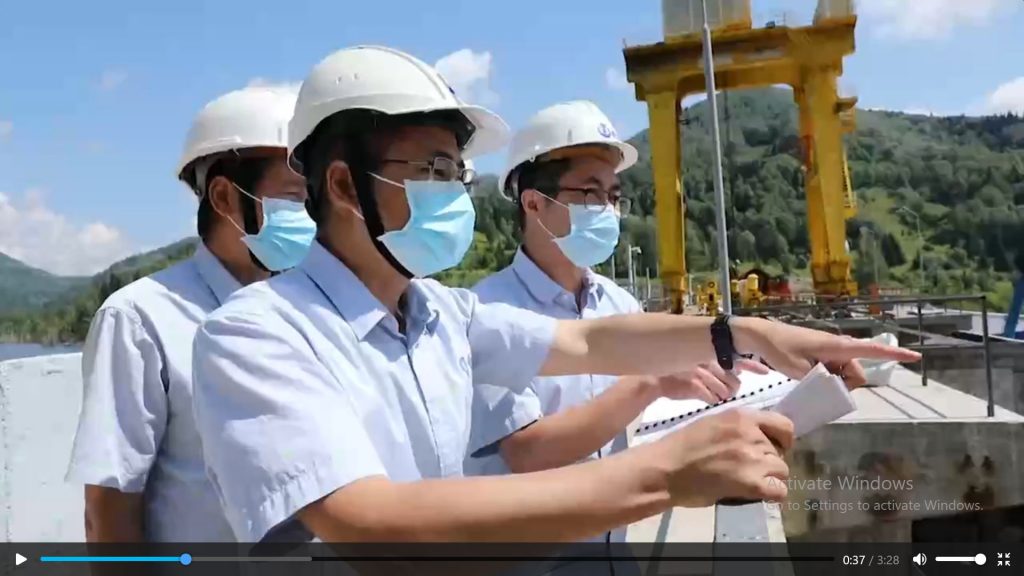
According to Xinhua agency the
China-built Turgusun hydropower plant has been operating at full capacity since
mid-July and will help ease a power shortage in East Kazakhstan Region. The
plant is located on the Turgusun River near the city of Altai.
Built by the China International Water and Electric Corporation (CWE), a
subsidiary of the China
Three Gorges Corporation, the station has an installed capacity of 24.9 MW,
and is expected to produce up to 79.8 million kilowatt hours of electricity per
year.
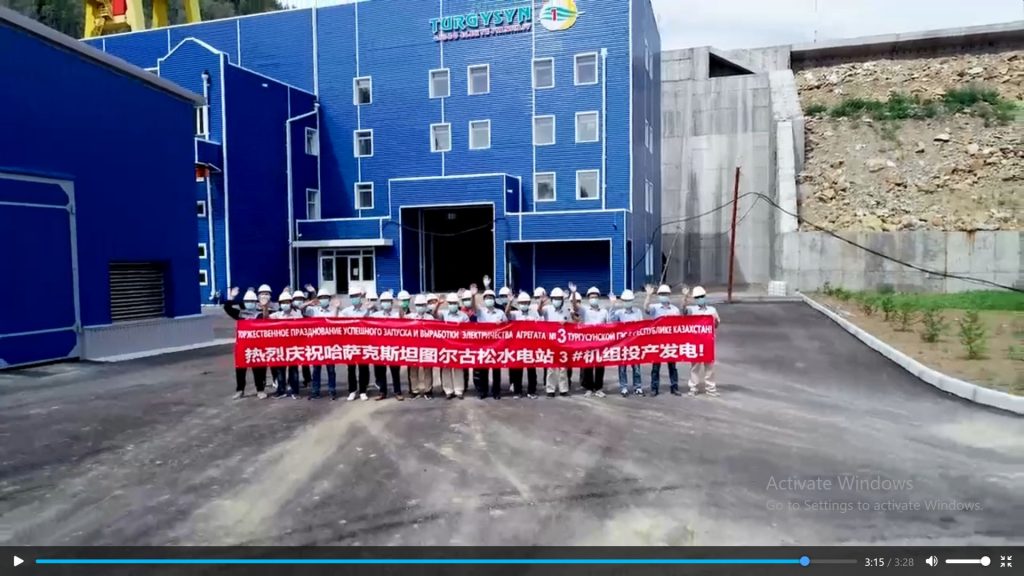
The first (and the only) Sino-Kazakh hydropower project completed (and actually undertaken) since the “Belt and Road Initiative” was proclaimed by Chairman Xi at his lecture in Nazarbayev University in 2013. The contract with CWE was signed in 2014 , after previous joint project – a 300MW Moinak Hydro was put online, accidentally ruining natural flooding regime in Sharyn National Park and causing severe ecosystem degradation along the Sharyn River.
There were high hopes to complete this new small hydro by 2018, the project has been included in the state program of Industrial and Innovative Development of Kazakhstan for 2015-2019 as well as in the “Program to transfer industrial capacity from China to Kazakhstan”, but actual completion took twice longer and construction cost has grown correspondingly at least by 35% (not including the cost of finance adding another 35% if assessed conservatively).
Now as President Kassym-Jomart Tokayev said that green energy is expected to contribute to 15 percent of its electricity consumption by 2030, it is important to analyze the reasons for delay and lack of success in this project to avoid similar pitfalls in future. Sustainability of the Turgusun-1 hydropower project is quite questionable from many perspectives.
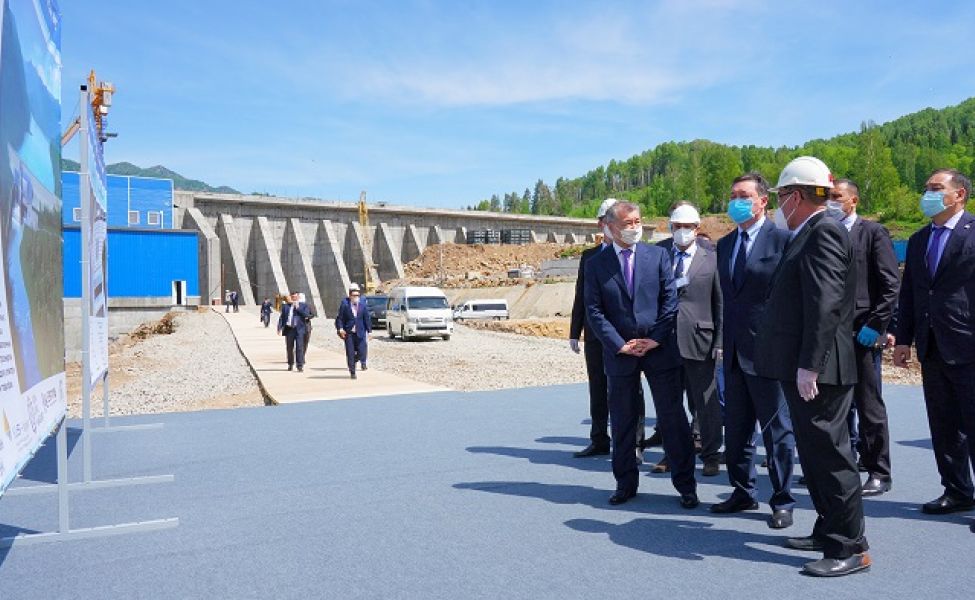
First a foremost, the project has clear corruption element installed into it: major stakes in the new hydro company “Turgusun -1” belongs to businessman Talgat Akhmetov – the son of the Akim (ruler) of the East Kazakhstan Region Dayiar Akhmetov, through companies “Eco-Energy”and ТОО “KAZ.InterGroup PV”. Husband of a sister of the same Akim Akhmetov- Gabbas Bekturov is another key shareholder of the “Turgusun -1” Co.
Secondly, the business scheme when key engineers come from China, while other contractors are selected by corrupt local officials leads to conflicts with local population. Although hiring local people has been always advertised as advantage of this project, it caused pain instead of gain, as subcontractors for many months failed to pay basic wages to great number of workers and small businesses involved in construction and supply chain, leading to public protests and investigations. In operations phase, it is planned to create 15 new permanent jobs, which cannot help to tackle problem of unemployment.
As many other projects dependent on irreplaceable foreign workforce, the Turgusun dam fell victim to COVID-19 and was delayed for several months as Chinese engineers could not come and test the installed equipment.
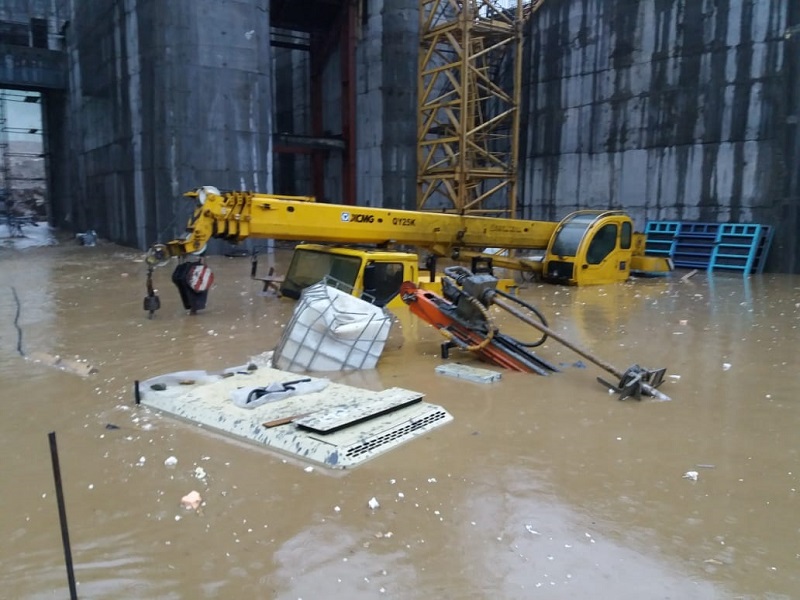
Thirdly, poor planning and lack of climate adaptation thinking is another major component in this failure. The first hydropower plant was built on Turgusun River by French engineers in May 1902, but it was washed away by flood by October 1902. Nevertheless Chinese engineers who planned construction process were either not aware of those facts or disregarded them. As a result the place of construction was severely damaged by floods in 2018 and 2019. Thus in 2018 in was flooded 8 times during three month and reported direct losses exceeded 100 million tenge.
Fourth, financial scheme was heavily reliant on poorly controlled public money. One would assume that from the perspective of China and its Three Gorges Corporation, this tiny plant is akin a charitable donation. While it has not made them rich and more famous, we need to give credit to Chinese side that despite all fanfare about Sino-Kazakh cooperation in hydropower there were, likely, NO Chinese banks, funds or companies investing into the Turgusun Hydro! For friendship is friendship, but business needs to have solid foundation, obviously absent in this case. Chinese engineering firm acted as general contractor and also procured equipment from chinese manufacturers. Therefore 75% of project funding came in loans from Development Bank of Kazakhstan and related domestic institutions, which in their turn emptied coffers of the Kazakhstan Pension Fund. The payback period is 12 years at 7% (while other sources quote 16.5% of interest). The rest of funding comes from developer “Turgusun-1 Co.” – borrowed money of unclear origin. Actually, such finance arrangements could be driven by Kazakh side, which in case of the Moinak Hydro opted to pay back Chinese loans faster than originally planned, likely due to prohibitively high servicing cost. None of available sources discloses true resulting cost of this construction project in USD, which in our rough estimate by far exceeded USD 45 million (without taking into account the interest on loans).
According to Nurbol Kopbaev, deputy director of the Turgusun-1 company, the Eastern Kazakhstan Region had a power deficit of about 50 MW and the launch of the Turgusun station could greatly ease the shortage. However, one should consider a recent plan of the government to privatize two largest hydropower plants of the Eastern Kazakhstan Region, with likely reorientation of those megadams from serving public good to supplying private metallurgy plants or rampant bitcoin mining. Meanwhile experts say, that the same public funds could be spent more efficiently on modernization of this near 1 Gigawatt ( 40 Turgusun hydros!) of existing hydropower capacity, resulting in much better gain for energy stability of the region than that which will be allegedly provided by a small Turgusun hydro on a flood-prone river..
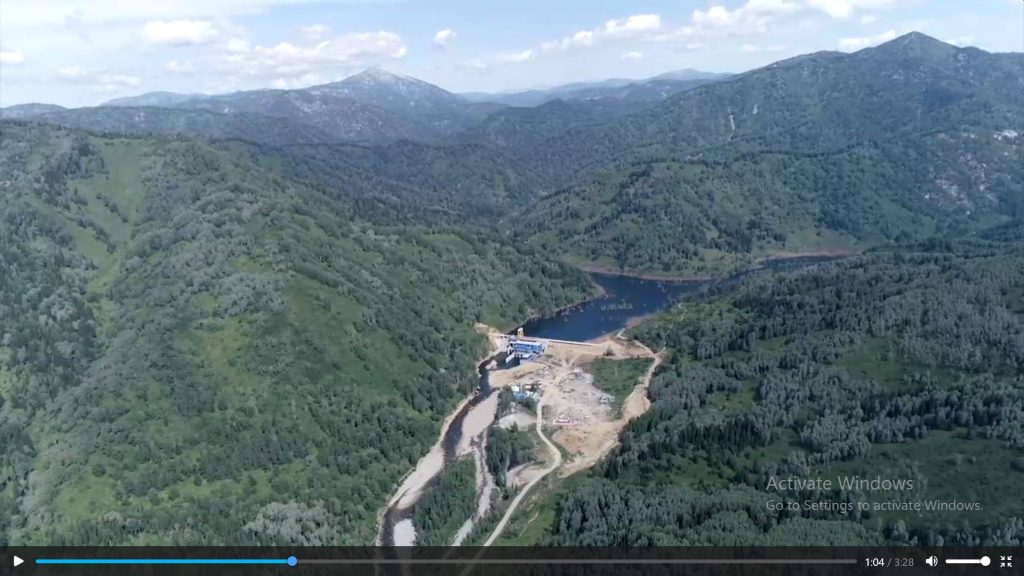
Finally both Chinese media and Kazakh authorities are trying to sell this hydropower as “green energy”. It is a bad joke. None of media reports talks about preserving fish migration in Turgusun river, neither we see a fishpass on recent Chinese footage of the newly built plant. What we see, however, are multiple dying trees sticking from water surface and several logs floating to newly built dam. This means that no one even bothered removing woody vegetation from the future reservoir bottom and it will be rotting there and producing methane – most potent green house gas. So far in many reports on the dam specific environmental management measures to mitigate its adverse impacts have not been even mentioned, for example we did not find a single word about environmental flows that this new dam is obliged to release downstream.
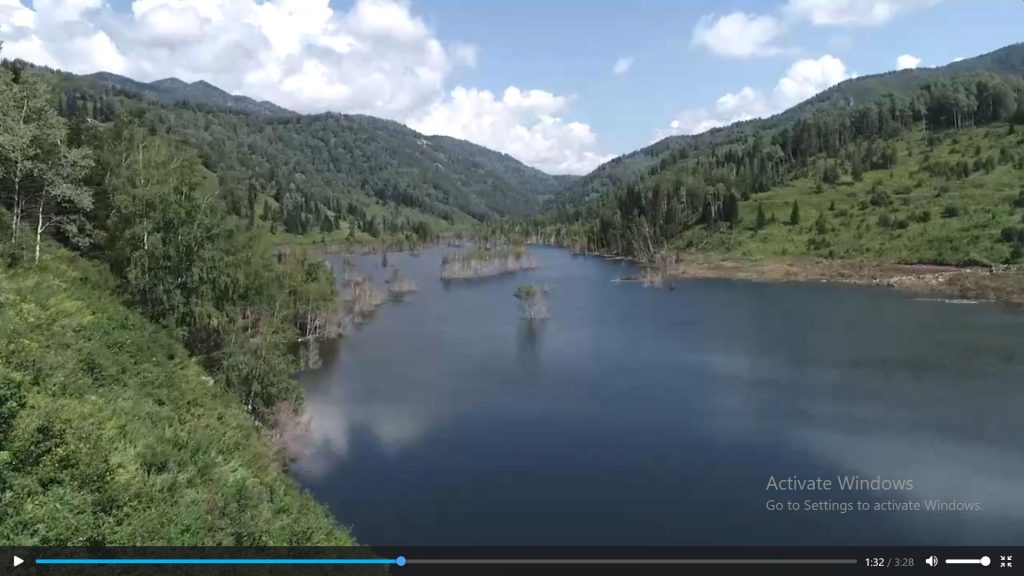
Kazakhstan is forging ahead with renewable energy projects, with 23 green
energy projects with a total capacity of 381 MW expected to be put into
operation in 2021. Fortunately most of those are wind and solar, but powerful
engineering lobby and corrupt elites are trying to push for more hydro,
including Turgusun -2 (40 MW) and Turgusun-3 (100 MW).
In a recent review “Energizing Kazakhstan” published by the IIGF Green Belt and Road Initiative Center experts from the Oxford University Silk Road Society Think Tank explain why new hydropower will not be beneficial for Kazakhstan. A thesis well illustrated by the case of Turgusun Hydro. The experts from Oxford suggest that fast development of solar and wind capacities, combined with radical modernization of national grids will result in much more reliable renewable energy system for the country.

